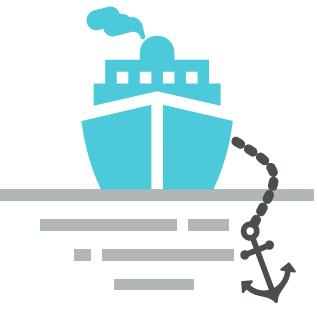This page contains answers to Seagull CES test about Ballast Water Management, and serve as a database of questions and answers, using which seafarer can prepare to exams for getting certificate of competence, or just to challenge yourself with knowledge in this theme.
CBT CD 0027 – Ballast Water Management.pdf
Download
Use the search below to find question.
Amount of questions: 17.
Right answers marked with this sign .
According to this module, what is the estimated amount of untreated ballast water discharged each year? Select the ONE best answer:
3 000 to 4 000 million tonnes.
300 to 400 million tonnes.
3 000 to 4 000 billion tonnes.
3 to 4 million tonnes.
Does the Ballast Water Management Convention apply to any vessel of any type operating in the aquatic environment, regardless of whether they carry ballast water or not?
Yes.
No.
Does the Ballast Water Management plan need be approved by the flag State administration under IMO regulations?
Yes.
No.
For how long must the ballast water record book be kept on board the ship? Select the ONE best answer:
Minimum 2 years from last date of entry.
Minimum 3 years from last date of entry.
Minimum 2 years from first date of entry.
Minimum 4 years from first date of entry.
Some ballast water treatment technologies are considered highly toxic, requiring monitoring of by-products in the discharged water. Which of the following does this apply to?
Electrolysis.
Ultra Violet.
Ozonation.
Chemical Injection.
The BWM convention is divided into 22 articles and an annex. Which sections of the Annex are of particular importance to ships? Select the ONE correct answer:
Sections B and D.
Sections A and F.
Sections B and E.
Sections D and C.
What is the estimated number of species transported by ship ballast? Select the ONE best answer:
More than 10 000 species.
More than 8 000 species.
More than 5 000 species.
More than 3 000 species.
When did the Ballast Water Management convention enter into force? Select the ONE correct answer:
September 2017.
September 2018.
November 2017.
November 2018.
Where must all ballast water operations be recorded? Select the ONE correct answer:
The Ballast water management plan.
The Deck Log.
The Ballast water record book.
The ship’s monthly report.
Which ONE of the following best describes the “Flow-through” ballast exchange method? Select the ONE best answer:
The ballast tank is first emptied and then refilled with replacement ballast water.
Replacement ballast water is pumped into a ballast tank, which is then allowed to overflow.
Water enters through an opening in the forward end, is led into the tanks and exits at the aft end.
Replacement ballast water is filled through the top of the ballast tank with simultaneous discharge from the bottom.
Which ONE of the following options best describes the aims of the Ballast Water Management Convention?
Minimizing the uptake of organisms during ballasting.
Minimizing the build-up of sediments in ballast tanks, which may harbour organisms.
Undertaking ballast water management measures, including ballast exchange at sea to minimize the transfer of organism.
All of the alternatives.
Which TWO of the following best describe how invasive species may be carried by ships? Select the TWO best answers:
Anything, that is small enough to pass through ship’s ballast water sea chest, strainers and pumps may be carried in ship’s ballast water.
Invasive species can only be carried attached to the propellers, outside of the hull, sea chest or other parts of the ship.
Invasive species may be attached to the propellers, outside of the hull, sea chest or other parts of the ship.
Invasive species may only be carried by the ship’s crew and introduced into the water.
Which ballast water exchange methods can cause extra stresses on the hull? Select the TWO best answers:
Flow through method.
Sequential method.
Dilution method.
Natural exchange.
Which one of the following best describes ballast water exchange by the Sequential method?
Replacement ballast water is pumped into a ballast tank.
The ballast tank is first emptied and then refilled with replacement ballast water.
Water enters through an opening in the forward end, is led into the tanks and exits at the aft end.
Replacement ballast water is filled through the top of the ballast tank with simultaneous discharge from the bottom.
Which one of the following best describes ballast water exchange by the Dilution method? Select the ONE best answer:
Replacement ballast water is pumped into a ballast tank.
The ballast tank is first emptied and then refilled with replacement ballast water.
Water enters through an opening in the forward end, is led into the tanks and exits at the aft end.
Replacement ballast water is filled through the top of the ballast tank with simultaneous discharge from the bottom.
Why does a ship carry ballast? Select any answers that you think apply:
To ensure, that it has sufficient draft and stability.
So that it has the correct trim.
To ensure, that the propeller is adequately immersed.
Why have many of the natural barriers to the spread of species reduced? Select the TWO best answers:
Rapidly increasing world trade.
Larger and faster ship’s completing their voyages in a shorter time.
Global warming.
Species have become more adaptable.
Changes in legislation.
Ballast Water Management – test
Try online
